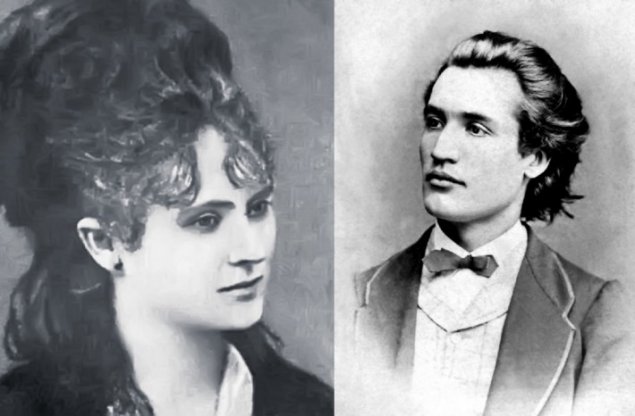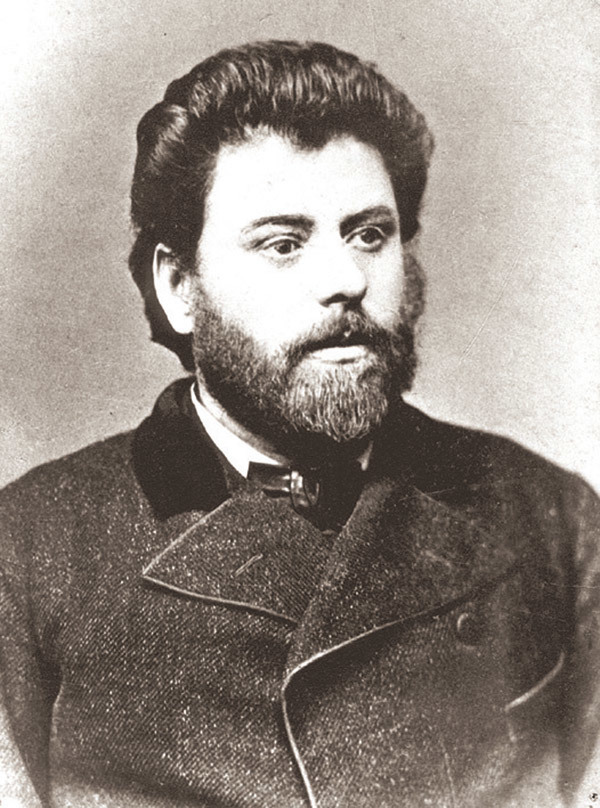The Strange Death of Mihai Eminescu, Romania's Famous Poet
Apr 13, 2020 11:25:56 GMT -5
The Duchess and Windischer like this
Post by madkingrisen on Apr 13, 2020 11:25:56 GMT -5
"You shall see that from thousands of beings, only one can love as fiercely as I love you; and if you were to kill me, I would love you through the last moments of my agony"

These are lyrics dedicated by Austro-Romanian poet Veronica Micle to her lover, the most famous Romanian writer in the country’s history, Mihai Eminescu. Theirs is a love story that haunts Romania’s literary halls to this day. One could say they are our nation’s equivalent of Romeo and Juliet, except far more real.
Eminescu met Micle in 1872, on a trip to Vienna. She was, at the time, a married woman with two young daughters and an emerging prose writer. Fairly soon after their meeting, the two began an affair that would last for almost two decades, until his untimely death.
Although Veronica’s husband, Stefan Micle, died in 1879, the two lovers never married, because Veronica’s only income was the alimony paid to her by the state over her husband’s death. If she were to remarry, she would lose that, and so they never legalized their relationship, but it was one of fierce passion. She wrote him countless verses like the ones above, and in turn, almost all of Eminescu’s love poems (of which there are several) were in some way or another about Veronica.

In one letter after her husband’s death, Eminescu told her that he did not know what his life would be like without her, confessing how much meeting her had influenced him (both his being and the best part of his writing).
After the death of Veronica’s husband, the two tried to have a family of their own, but they were sadly unable to. But that didn’t stop them from being close until Eminescu’s death.
Mihai Eminescu: syphilitic madness or political assassination?
Mihai Eminescu died on the 15th of June 1889, when he was only thirty-nine years old. Officially, he died a madman, wracked by syphilis and a victim of alcoholism. However, there are numerous theories circulating among scholars and biographers that paint a different picture.
Mihai Eminescu was a deeply nationalist and patriotic man, at a time when being loyal to your country was considered a bad thing. In the 19th century, Romania was deeply dominated by the Austro-Hungarian Empire. In 1883, the King at the time, Charles I (Carol I-ul) was looking to sign a humiliating treaty with the Empire, by which he was giving up his claim to a huge chunk of Romania (the Ardeal area).
Now, Mihai Eminescu, being a nationalist, saw this as treason and aside from his literary career (he frequently penned subversive material), participated in many rallies across the country. He was the leader of the secret society “Carpații” (thus named for the Carpathian mountains in Romania), which sought to gather guns and put an end to the Austro-Hungarian domination.
But he never got to do any of this, because he was forcibly put in a mental asylum for so-called “mental alienation”. The issue many have with this was that his friends and family were not allowed to check on him and he was committed at the order of fellow writer and statesman Titu Maiorescu, who was in direct contact with Austrian authorities.
The last five years of Mihai Eminescu’s life were spent in and out of asylums and hospitals (including one in Vienna). His health deteriorated, but he continued to write until the end of his life.
After traveling from one hospital to another, he moved in with Veronica Micle in Bucharest in late 1888. In February 1889, Eminescu was once again committed for dementia and died in June of that year. Many theories say that throughout these last months of hospitalization, Eminescu was systematically poisoned with mercury until he eventually died.
Some statesmen of the era even referred to him as “a political prisoner” and “a man in perfect mental health”.
I don’t want to put forward or support any conspiracy theories, but I think this is a very interesting and little talked about aspect of my country’s history, one that surely deserves further exploration.
Towards the end of his life, Veronica Micle stayed away from Eminescu, explaining that she was not strong enough to see so great a man reduced to such a pitiful state.
But her suffering at the news of the poet’s death was immense and unspeakable. She retreated to a monastery, where she swallowed arsenic less than two months after her lover’s death. She was also 39 years old.
Interestingly enough, the poet’s sister, Henrieta, also died in October of that year. A spinster of fragile health, she had dedicated her whole life to her brother (as well as her own intellectual pursuits). Sadly, she died of tuberculosis and in abject poverty, the state refusing to pay her her brother’s alimony.

Lastly, Eminescu’s best friend, fellow author Ion Creangă, died on New Year’s of 1889 in a fit of epilepsy. He’d been gravely affected by his friend’s passing, as well as by Micle’s death.

Now, some say these deaths are not a coincidence. That the friend, the sister and the lover were also assassinated, to hush up any theories about the poet’s suspicious death. Likewise, one can assume that the three, being so close to Eminescu, shared in his nationalist views.
Once again, it is not my purpose to pot forth any crazy conspiracy theory. Just to point out certain events that, to me, are fascinating. Thank you for reading!




